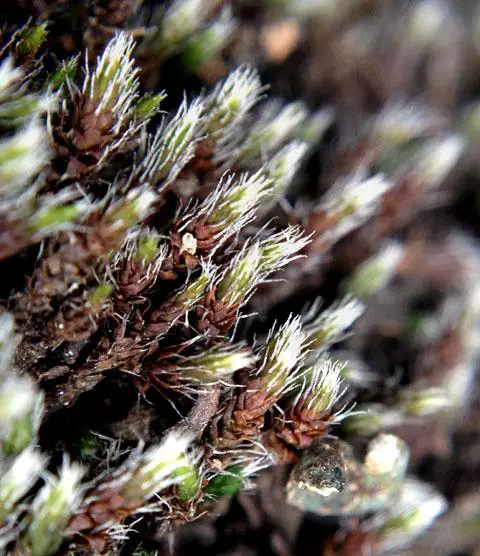
grimmia_pilifera.jpg from: https://www.earth.com/plant-encyclopedia/Bryophytes/Grimmiaceae/grimmia-pilifera/en/
Introduction
In the vast and captivating world of bryophytes, the Grimmia pilifera P.Beauv. moss stands out as a remarkable member of the Grimmiaceae family. Often referred to simply as Grimmia, this unassuming yet resilient moss has captured the hearts of enthusiasts worldwide with its unique characteristics and ecological significance.
Background
Before delving into the intricacies of Grimmia pilifera, it’s essential to understand the broader context of bryophytes. These non-vascular plants, which include mosses, liverworts, and hornworts, are often overlooked but play a crucial role in various ecosystems. They are among the oldest land plants, dating back to the Paleozoic era, and have adapted to thrive in diverse environments.
Main Content
Morphology and Identification
Grimmia pilifera is a small, acrocarpous moss that forms dense, cushion-like tufts or mats. Its leaves are lanceolate, with a distinctive hair-like awn (pilifera means “hair-bearing”) at the tip, giving the moss a unique and easily recognizable appearance. The leaves are also characterized by their incurved margins and a single costa (midrib) that extends into the awn.

maxresdefault.jpg from: https://www.youtube.com/watch?v=dTLcEce-rlc
Global Distribution and Habitat
This moss is widely distributed across various regions, including Europe, North America, Asia, and parts of Africa. It thrives in a range of habitats, from rocky outcrops and cliffs to tree bark and soil.

Grimmia_pilifera_M18078_1556742917.jpg from: https://bryophyteportal.org/portal/taxa/index.php?taxauthid=1&taxon=159247&clid=114
Grimmia pilifera is particularly well-adapted to dry and exposed environments, making it a pioneer species in colonizing newly available substrates.
Ecological Roles and Adaptations
Despite its small size, Grimmia pilifera plays a vital role in its ecosystems. It contributes to soil formation and stabilization, provides microhabitats for other organisms, and acts as a moisture reservoir in arid environments. The moss’s ability to withstand desiccation and rapidly rehydrate is a remarkable adaptation that allows it to survive in harsh conditions.

g_pilifera8.jpg from: https://wnmu.edu/academic/nspages/gilaflora/grimmia_pilifera.html
Case Studies/Examples
One notable example of Grimmia pilifera’s ecological significance can be found in the Arctic tundra. This moss is a key component of the biological soil crust, helping to stabilize the fragile tundra ecosystem and prevent soil erosion. Its presence also facilitates the establishment of other plant species, contributing to the overall biodiversity of the region.
Technical Table
| Characteristic | Description |
|---|---|
| Phylum | Bryophyta
 2.jpg from: https://nathistoc.bio.uci.edu/Mosses/Grimmia laevigata/index.html |
| Class | Bryopsida |
| Order | Grimmiales |
| Family | Grimmiaceae |
| Genus | Grimmia |
| Species | pilifera P.Beauv. |
| Growth Form | Acrocarpous, cushion-like tufts or mats |
| Leaf Shape | Lanceolate, with a hair-like awn |
| Habitat | Rocky outcrops, cliffs, tree bark, soil |
| Distribution | Europe, North America, Asia, Africa |
Conclusion
The Grimmia pilifera P.Beauv. moss, a member of the Grimmiaceae family, is a true marvel of nature. Its resilience, adaptability, and ecological significance make it a fascinating subject for enthusiasts and researchers alike. As we continue to explore and appreciate the intricate world of bryophytes, this unassuming moss serves as a reminder of the incredible diversity and importance of even the smallest organisms in our ecosystems. Perhaps the next time you encounter a cushion-like tuft on a rocky surface, you’ll pause to appreciate the remarkable Grimmia pilifera and the wonders it holds.